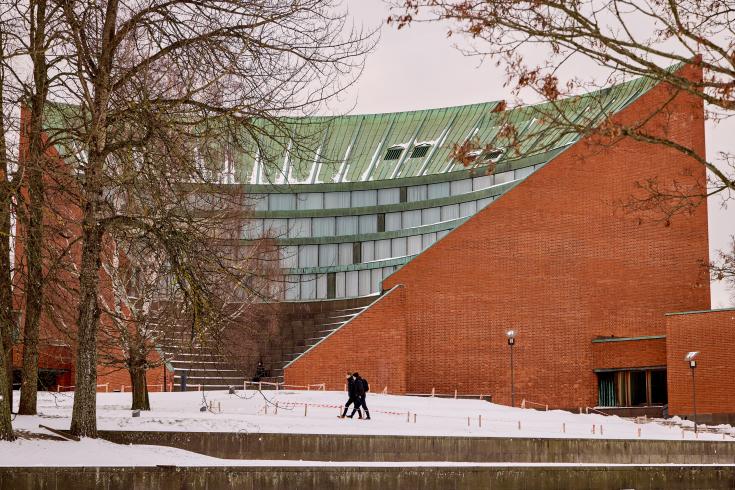VIOLET adapts regional policies for heritage buildings

Traditional and heritage buildings face specific challenges in achieving modern energy performance requirements as they are built with old-fashioned construction techniques and materials, therefore are less energy efficient than modern methods of construction. However, renovation is inhibited by the need to keep the building’s cultural value. Indeed, natural and cultural heritage buildings are often protected, with specific restrictions on what can be done to adapt them for modern use.
As such, specific approaches are needed that can improve performance, while also maintaining heritage, a topic explored by the VIOLET (’Preserve traditional buildings through energy reduction’) project. We last caught up with the VIOLET project just after they had completed their interregional learning process and produced their regional Action Plans.
What have they achieved since then?
-
Cyprus Energy Agency
The Cyprus Energy Agency has influenced the national law transposing the Energy Performance of Buildings Directive to directly mention the performance of heritage buildings. Concretely, listed buildings are no longer exempt from providing an Energy Performance Certificate when sold or rented, and owners may only avoid meeting minimum energy performance requirements if they present a plan for energy upgrading.
Additionally, the Agency established a guidebook for professionals, relevant authorities and the general public to support solutions for upgrading heritage buildings, taking into account energy efficiency. A seminar was organised to inform stakeholders about the legislative changes and to provide tools and skills to address the topic.
The Cyprus Energy Agency now acts as an external consultant for the Directorate General Growth and other authorities in Cyprus managing funding schemes or policy making, and gives input and submits proposals when requested and when relevant.
-
Regional Ministry of Development, Infrastructures and Territorial Planning of Andalusia, Spain
The Regional Ministry of Development, Infrastructures and Territorial Planning of Andalusia, Spain has influenced its Operational Programme 2014-2020 so that it now allows funding of actions that tackle both energy efficiency and renovation of historical buildings. They have also influenced the region’s PLAN VIVE, for retrofitting and urban regeneration of Andalusia 2020-2030, by establishing a series of energy performance indicators which will be used to provide a baseline diagnosis of historical buildings in Andalusia.
New funding has also been made available for research into ‘Categorisation, diagnosis and methodologies of intervention and conservation of Architectural Heritage’. In addition, the programme for the retrofitting of historical buildings has improved the planning, management, implementation, monitoring and evaluation processes for the proper implementation of high energy efficiency standards.
-
Municipality of Middelburg, the Netherlands
In the Netherlands, the Municipality of Middelburg has been piloting a system of Sustainable Monument coaches to provide support to the owners of listed buildings to make their properties more energy efficient. After the household expresses interest, the coach visits the listed property to assess the energy performance and recommend interventions.
Homeowners pay a 500 EUR deposit, getting half of it back when they implement an energy-saving measure, and the other half after a second measure is implemented. In this way, the municipality ensures that advisor time is not wasted. At least a dozen listed buildings have so far made energy-saving interventions.
A lot of owners want to use their rooves for solar energy, but due to the protected townscape, which is subject to strict regulations, this is a challenge. Therefore the Municipality has made a ‘roofmap’ of the inner city where solar panels are allowed and where it is forbidden.
-
Local Energy and Climate Agency of Bordeaux and Gironde, France
In France, the Local Energy and Climate Agency of Bordeaux and Gironde has influenced the Regional Programme for Energy Efficiency (PREE), under which three calls for proposals have been launched for energy efficiency measures with additional assistance provided for heritage buildings.
The aim is to both encourage owners to make interventions, but also to collect data on applications and projects that can be used to shape future calls and mainstream heritage buildings into support instruments and the regional strategy for the energy transition. The Agency has also implemented training modules for the civil servants who process such applications.
-
South-East Romania Development Agency
Finally, the South-East Romania Development Agency of Romania has used lessons learned from VIOLET to elaborate a monitoring methodology for heritage projects under 2014-2020 Regional Operational Programme. In the past, projects under the Priority Axis ‘Conservation, protection, promotion and development of natural and cultural patrimony’, have been funded to preserve heritage buildings, but with no requirements to improve energy efficiency.
Working with the Cultural Heritage Directorate, the Agency has developed a methodology to promote and monitor energy efficiency improvements in projects funded under this priority. A new toolkit has been developed that includes a database of the energy performance of heritage buildings and a questionnaire for project beneficiaries to report on energy efficiency measures and improvements.
The achievements reveal a number of lessons for other regions:
- Heritage buildings need specific attention and face different challenges from others. Bespoke advice and support are required, and they must be distinctly considered in strategies and plans;
- Specific expertise is needed for renovating such buildings. Owners may not know what they can do while also respecting cultural conservation. Civil servants and renovators also need new awareness and skills;
- Considering limited experience so far, interventions need to be monitored for impact (both positive and negative) to provide experience and guidance for future interventions.
For more on VIOLET, read our previous feature, Energy renovation of heritage buildings, find out about their ‘fifth call’ activities, or visit the VIOLET project website.
